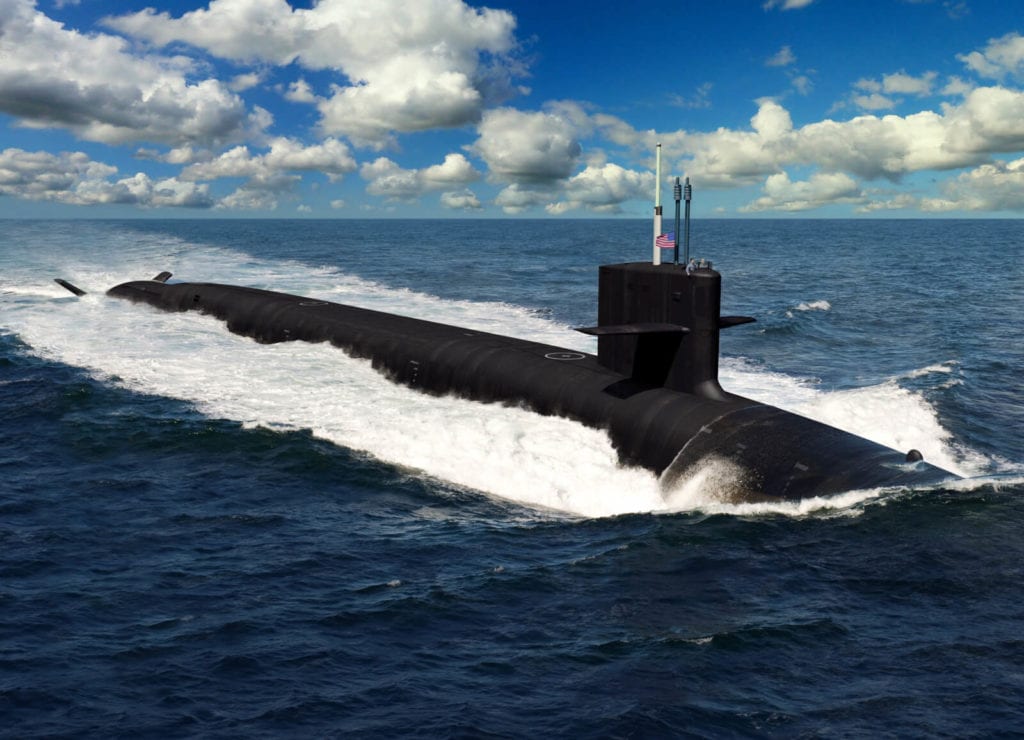Navy Leaders to Meet May 16 to Assess Sub Construction Delays, Columbia Class Schedule, Secretary Tells House Panel

U.S. Navy leaders will meet with industry officials in May
to examine how they can improve the increasingly challenged submarine
production program and try adding more space in the tight schedule to build the
first of the Columbia-class ballistic missile submarines, Navy Secretary
Richard V. Spencer said April 30.
The Navy would like to increase the production of its
Virginia-class attack submarines from two a year to three to stop the decline
in the already inadequate number of attack boats. But that pace is hampered by
the fact that the two shipyards building those boats also are responsible for
getting the Columbia class into service by 2031, when the Navy’s Ohio-class
boomers will be unable to continue their crucial strategic deterrence patrols,
Spencer said.
“We do have concerns,” Spencer told the House Appropriations
Defense Subcommittee. To address those issues, the Navy will sit down with
industry leaders May 16 to assess the sub construction yards and the supply
chain and seek to “build in margin where we can” for the Columbia-class
schedule.
“If we do not, it will run off the rails,” Spencer said in
response to questions from the panel responsible for providing the money the
Navy Department will need for all its programs.
In addition to the questions the appropriators had about the
Columbia class, the Navy’s self-declared No. 1 procurement priority, the
subcommittee’s chairman, Rep. Pete Visclosky (D-Indiana), hounded the Navy
leaders on the chronic problems in submarine maintenance and acceptance of new
warships with multiple material problems.
Visclosky pointed out that three of the older Los Angeles
class attack submarines — Boise, Columbus and Hartford — are no longer
certified to submerge because they have not received maintenance that is
overdue. He emphasized that Boise was scheduled to go into the repair yard in
2013 but still is waiting for an opening.
And Visclosky was particularly troubled by the Navy failing
to request funds to repair the three inoperable submarines in its regular
fiscal 2020 budget request but added them to the unfunded requirements list.
Spencer and Chief of Naval Operations Adm. John M.
Richardson conceded they were having trouble getting submarines into required
maintenance, which was aggravating the inability to meet combatant commanders’
requests for the attack boats, with some reports putting the shortfall as high
as 50 percent.
The two Navy leaders argued that the submarine maintenance
problem stemmed from the sharp reduction in funding during the years when the
Budget Control Act forced sequestration.
But Visclosky replied that “sequestration happened some time
ago” and Congress “provided a lot of money” the last two years.
Spencer said the shipyards cut their skilled work force
during the lean years and are now working to replace those workers and improve
their aged facilities. He and Richardson emphasized the Navy’s program to
modernize the government-owned shipyards and to incentivize the private yards
to also update and expand.
Visclosky also demanded the Navy provide details on the
problem highlighted in a recent Government Accountability Office report showing
a long list of new ships the Navy has accepted from the builders with a range
of deficiencies. He stressed the aircraft carrier Gerald R. Ford (CVN-78), the
first in its class of aircraft carriers, is not expected to be operational
until 2023, nearly five years later than expected because of numerous
construction deficiencies.
The chairman wanted to know how the cost of correcting those
flaws was divided between the Navy and its contractors, noting that GAO
indicated the government has been paying 96 percent. Spencer promised to
provide the data.